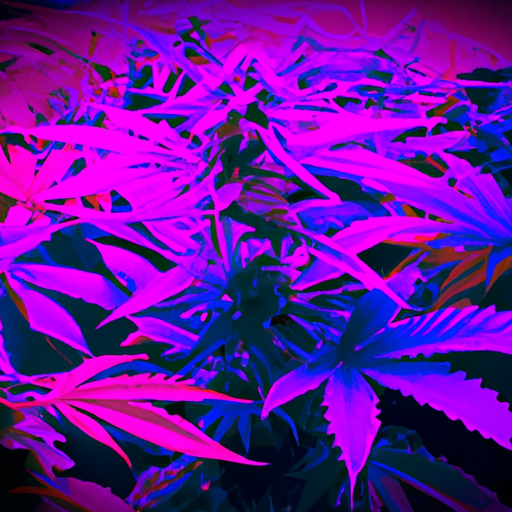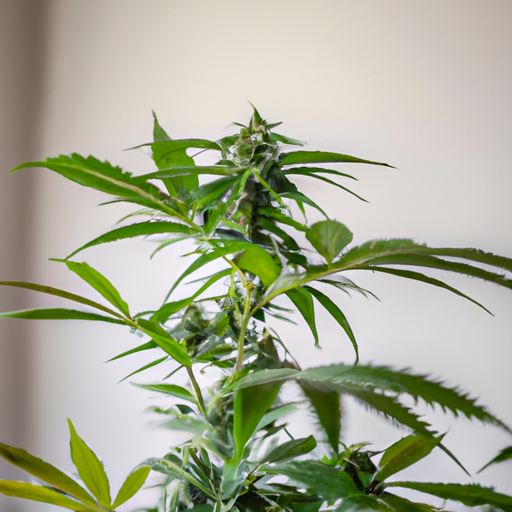Are you ready to embark on a journey into the world of cannabis cultivation? Whether you're a seasoned grower or just starting out, our expert tips will equip you with the knowledge and expertise to cultivate your own high-quality cannabis at home. In this article, we delve into the art and science of cannabis cultivation, covering every stage of the process to help you grow your best crop yet. From choosing the perfect strains and genetics to understanding optimal lighting, nutrients, and growing mediums, we provide comprehensive guidance to maximize the quality and yield of your cannabis crop. Along the way, we'll also troubleshoot common cultivation issues, ensuring you overcome any challenges that may arise. Get ready to unlock the potential of your homegrown harvest and experience the satisfaction of enjoying your very own cannabis garden. So grab your gardening gloves and let's dive into the magical world of cannabis cultivation.
- 1. "Choosing the Perfect Cannabis Strains and Genetics: Unlocking the Potential of Your Homegrown Harvest"
- 2. "Optimal Lighting, Nutrients, and Growing Mediums: Maximizing the Quality and Yield of Your Cannabis Crop"
- 3. "Troubleshooting Common Cultivation Issues: Overcoming Challenges to Cultivate High-Quality Cannabis at Home"
1. "Choosing the Perfect Cannabis Strains and Genetics: Unlocking the Potential of Your Homegrown Harvest"

Choosing the Perfect Cannabis Strains and Genetics: Unlocking the Potential of Your Homegrown Harvest
When it comes to cultivating high-quality cannabis at home, one of the most important factors to consider is choosing the right strains and genetics. This decision will have a significant impact on the overall quality, potency, and flavor of your homegrown harvest. So, how do you go about selecting the perfect cannabis strains for your cultivation endeavor? Let's dive in and unlock the potential of your homegrown cannabis.
1. Understanding Your Preferences and Needs:
Before diving into the world of cannabis strains and genetics, it's crucial to understand your personal preferences and needs. Are you looking for a strain that provides relaxation and stress relief? Or are you more interested in strains that offer an energizing and uplifting effect? Understanding your desired effects and medicinal benefits will help narrow down your options.
2. Research and Explore:
The world of cannabis strains is vast and diverse, with countless options to choose from. Take the time to research and explore different strains and their unique characteristics. Look for strains that align with your preferences and needs. Consider factors such as THC and CBD content, aroma, flavor profiles, and potential medicinal benefits.
3. Consider Growing Conditions:
Another important aspect to consider when choosing cannabis strains is your growing conditions. Different strains have different requirements when it comes to lighting, temperature, humidity, and nutrient levels. Make sure to select strains that are suitable for your specific growing environment to ensure optimal growth and yield.
4. Seek Advice and Recommendations:
Don't be afraid to seek advice and recommendations from experienced growers or experts in the field. They can provide valuable insights and guidance based on their own experiences. Join online forums, attend cannabis cultivation seminars, or reach out to local cannabis communities to connect with fellow enthusiasts and learn from their expertise.
5. Experiment and Have Fun:
Cannabis cultivation is both an art and a science, and part of the fun is experimenting with different strains and genetics. Don't be afraid to try new and unique varieties that pique your interest. You never know what hidden gems you might discover along the way.
By choosing the perfect cannabis strains and genetics, you unlock the potential to grow your best crop yet. Remember to consider your preferences and needs, conduct thorough research, take growing conditions into account, seek advice from experts, and most importantly, have fun with the process. Happy cultivating!
FAQs:
Q: Can I grow any strain of cannabis at home?
A: While you can technically grow any strain of cannabis at home, it's important to consider the specific requirements of each strain. Some strains may require specific growing conditions that might not be feasible in a home cultivation setup.
Q: Can I grow cannabis for medical use at home?
A: The legality of growing cannabis for medical use at home varies from country to country and state to state. It's essential to familiarize yourself with the laws and regulations in your jurisdiction before embarking on a home cultivation journey for medical purposes.
Q: What are the benefits of growing cannabis at home?
A: Growing cannabis at home allows you to have full control over the cultivation process, ensuring the quality and safety of your cannabis. It also provides the opportunity to grow specific strains that may not be readily available in the market.
Q: Can I use cannabis strains with high CBD content for medical purposes?
A: Yes, strains with high CBD content are often sought-after for their potential medicinal benefits. CBD has been known to offer relief from various conditions such as pain, inflammation, anxiety, and epilepsy.
SEO-Meta Description:
Unlock the potential of your homegrown cannabis harvest with expert tips on choosing the perfect cannabis strains and genetics. Explore the art and science of cannabis cultivation and embark on a rewarding journey of cultivating your own thriving cannabis garden.
2. "Optimal Lighting, Nutrients, and Growing Mediums: Maximizing the Quality and Yield of Your Cannabis Crop"

Optimal Lighting, Nutrients, and Growing Mediums: Maximizing the Quality and Yield of Your Cannabis Crop
When it comes to cultivating high-quality cannabis at home, one of the most crucial factors to consider is providing the optimal lighting, nutrients, and growing mediums for your plants. These elements play a significant role in maximizing the quality and yield of your cannabis crop. In this section, we will explore how to make the most of these factors to ensure a successful and rewarding cultivation experience.
1. Lighting:
Proper lighting is essential for the growth and development of cannabis plants. The right amount and quality of light can significantly impact the plant's ability to produce robust buds with potent cannabinoids. There are several options available for indoor growers, including fluorescent lights, high-intensity discharge (HID) lights, and light-emitting diodes (LEDs). Each type of light has its own advantages and considerations.
Fluorescent lights are a popular choice for beginners due to their affordability and versatility. They are suitable for the early stages of plant growth, such as seedlings and clones. However, they may not provide sufficient intensity for flowering and may lead to lower yields.
HID lights, such as metal halide (MH) and high-pressure sodium (HPS) lights, are widely used in the cannabis cultivation community. MH lights emit a bluish light spectrum, ideal for the vegetative stage, while HPS lights emit a reddish spectrum, promoting flowering. These lights are more expensive than fluorescent lights but offer higher intensity and better yield potential.
LED lights have gained popularity in recent years due to their energy efficiency and customizable light spectra. They produce less heat, allowing growers to place them closer to the plants without the risk of burning. LED lights can be adjusted to different spectrums tailored to specific growth stages, maximizing the plant's potential.
Regardless of the lighting system you choose, it's crucial to ensure that your plants receive the right amount of light for each growth stage. Providing a consistent light cycle with the proper balance of intensity and spectrum will help your plants thrive and produce high-quality buds.
2. Nutrients:
Just like any other plant, cannabis requires a balanced diet of essential nutrients to grow and flourish. While soil provides some nutrients, it's often necessary to supplement with additional fertilizers to ensure optimal growth and yield.
The three primary macronutrients that cannabis needs are nitrogen (N), phosphorus (P), and potassium (K). These macronutrients play different roles in the plant's development. Nitrogen promotes leaf and stem growth, phosphorus supports root development and flower formation, and potassium enhances overall plant health and disease resistance.
In addition to macronutrients, cannabis plants also require secondary nutrients, including calcium, magnesium, and sulfur, as well as micronutrients like iron, manganese, zinc, and copper. These nutrients are equally important but needed in smaller quantities.
Choosing the right nutrient solution for your cannabis plants depends on various factors, such as the growing medium and the specific needs of your chosen strain. There are many commercially available nutrient products designed specifically for cannabis cultivation, making it easier for growers to provide the necessary nutrients in the right proportions.
It's crucial to follow the recommended dosage instructions provided by the nutrient manufacturer. Overfeeding or underfeeding your plants can lead to nutrient deficiencies or toxicities, negatively impacting their growth and overall health.
3. Growing Mediums:
The choice of growing medium is another crucial consideration when cultivating cannabis. The medium serves as the foundation for the plant's root system, providing support, oxygen, and a source of water and nutrients.
Some of the commonly used growing mediums for cannabis include soil, coco coir, and hydroponics systems.
Soil is the traditional choice for many growers due to its ease of use and ability to retain nutrients. Organic soil mixes enriched with compost and amendments provide a fertile environment for cannabis plants to thrive. However, soil can be more challenging to control in terms of pH and nutrient levels.
Coco coir is a popular alternative to soil, especially for indoor growers. It is made from coconut husks and offers excellent water retention while allowing for adequate drainage. Coco coir provides a neutral pH base and can be easily amended with nutrients.
Hydroponics systems involve growing cannabis plants in a soilless medium, such as perlite, vermiculite, or clay pellets. These systems allow for precise control of nutrient delivery and pH levels, resulting in faster growth and potentially higher yields. However, hydroponics requires more specialized equipment and knowledge.
Ultimately, the choice of growing medium depends on your preferences, available resources, and the specific needs of your plants. Whichever medium you choose, it's essential to maintain proper moisture levels, pH balance, and nutrient delivery to ensure your cannabis plants thrive and produce high-quality buds.
In conclusion, optimizing lighting, nutrients, and growing mediums are crucial steps in cultivating high-quality cannabis at home. By providing the right lighting conditions, balanced nutrient solutions, and suitable growing mediums, you can maximize the quality and yield of your cannabis crop. Remember to consider the specific needs of your plants and monitor their progress closely to make any necessary adjustments along the way. Happy growing!
3. "Troubleshooting Common Cultivation Issues: Overcoming Challenges to Cultivate High-Quality Cannabis at Home"

Troubleshooting Common Cultivation Issues: Overcoming Challenges to Cultivate High-Quality Cannabis at Home
Cultivating cannabis at home can be a rewarding and fulfilling experience. However, like any gardening endeavor, it can come with its fair share of challenges. Don't worry though, because we've got you covered. In this section, we'll discuss some common cultivation issues that you might encounter and provide you with expert tips on how to overcome them.
1. Nutrient Deficiencies: One of the most common issues faced by cannabis growers is nutrient deficiencies. Plants require a balanced diet of essential nutrients to grow and thrive. If you notice yellowing leaves, stunted growth, or other signs of nutrient deficiency, it's crucial to identify the specific nutrient lacking in your plants. Common deficiencies include nitrogen, phosphorus, and potassium. To address this issue, you can adjust your nutrient feeding schedule, use organic fertilizers, or consider foliar feeding to provide nutrients directly to the leaves.
2. Overwatering and Underwatering: Proper watering is essential for healthy cannabis plants. Overwatering can lead to root rot and other fungal diseases, while underwatering can cause dehydration and nutrient lockouts. To avoid overwatering, make sure your pots have adequate drainage and allow the soil to dry out slightly between watering. On the other hand, if you notice your plants wilting or the leaves turning crispy, it might be a sign of underwatering. Adjust your watering schedule accordingly, considering factors such as the size of your plants, humidity levels, and the type of growing medium you're using.
3. Pest Infestations: Just like any other garden, cannabis plants are susceptible to pests. Common pests include spider mites, aphids, and fungus gnats. To prevent and control pest infestations, it's essential to maintain a clean and hygienic growing environment. Regularly inspect your plants for any signs of pests, such as webbing, tiny insects, or yellowing leaves. Consider using organic pest control methods like neem oil, insecticidal soaps, or introducing beneficial insects like ladybugs or predatory mites.
4. Light Burn or Light Stress: Cannabis plants require the right amount of light to grow and thrive. However, excessive light intensity can cause light burn or light stress, resulting in bleached or burnt leaves. To avoid this issue, ensure that your grow lights are at the appropriate distance from your plants. Different stages of growth require different light intensities, so adjust the height accordingly. If you're using high-intensity discharge (HID) lights, such as metal halide (MH) or high-pressure sodium (HPS), be extra cautious as they can emit a lot of heat.
5. Temperature and Humidity Fluctuations: Cannabis plants thrive in specific temperature and humidity ranges. Fluctuations in temperature and humidity can stress your plants and lead to various issues such as mold, bud rot, and nutrient uptake problems. Invest in a thermometer and hygrometer to monitor the environmental conditions in your grow space. Maintain a temperature range of 70-85°F (21-29°C) during the day and slightly cooler temperatures at night. Aim for a relative humidity (RH) level of around 40-60% during the vegetative stage and reduce it to 30-40% during the flowering stage.
By addressing these common cultivation issues, you'll be well on your way to cultivating high-quality cannabis at home. Remember, patience, observation, and a little bit of trial and error are key to becoming a successful cannabis grower. Happy growing!
FAQs:
Q: What are some organic pest control methods I can use?
A: Some organic pest control methods include neem oil, insecticidal soaps, and introducing beneficial insects like ladybugs or predatory mites.
Q: How do I prevent overwatering my cannabis plants?
A: To prevent overwatering, ensure your pots have adequate drainage and allow the soil to dry out slightly between watering. Consider factors such as humidity levels and the type of growing medium you're using.
Q: What temperature and humidity ranges are ideal for cannabis cultivation?
A: Cannabis plants thrive in a temperature range of 70-85°F (21-29°C) during the day and slightly cooler temperatures at night. Aim for a relative humidity (RH) level of around 40-60% during the vegetative stage and reduce it to 30-40% during the flowering stage.
Q: How do I identify nutrient deficiencies in my cannabis plants?
A: Nutrient deficiencies can manifest as yellowing leaves, stunted growth, or other abnormal symptoms. It's crucial to identify the specific nutrient lacking in your plants to address the issue properly.
Q: Can I use HID lights for cannabis cultivation?
A: Yes, you can use HID lights like metal halide (MH) or high-pressure sodium (HPS) for cannabis cultivation. However, be cautious as they can emit a lot of heat, which may require additional cooling measures.
